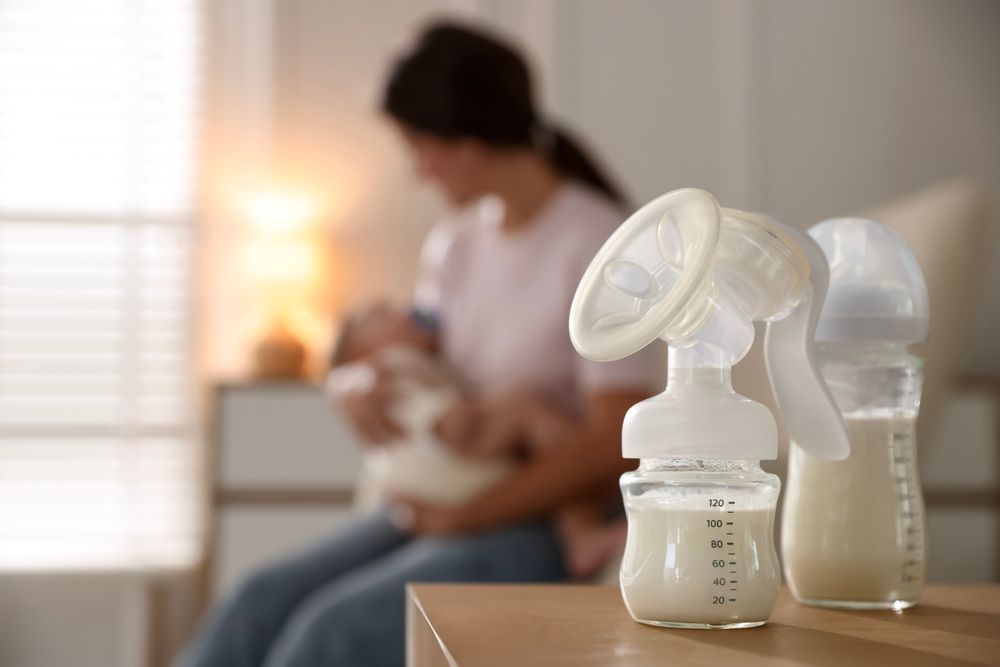Breastfeeding can be a deeply personal and rewarding experience, but it also comes with its own set of challenges. Whether you’re returning to work, managing supply, or simply looking for more flexibility, a breast pump can be an essential tool in your breastfeeding journey.
The key to a positive pumping experience is choosing the right pump for your body, schedule, and lifestyle. With so many options available—from manual models to high-tech wearable devices—it’s important to know what features to prioritize. This guide will walk you through the most important factors to help you select the best breast pump for your needs.
1. Understand Why You Need a Pump
The first step in choosing a breast pump is understanding why you need one. Different use cases require different types of pumps.
Common Reasons for Pumping:
-
Returning to work or school
-
Building a milk stash
-
Dealing with latching issues
-
Feeding a baby in the NICU
-
Managing an oversupply or undersupply
-
Wanting more flexibility or help from a partner
Clarifying your primary reason for pumping helps determine whether you need an occasional-use pump or a heavy-duty, daily-use model.
2. Know the Types of Breast Pumps
There are three main types of breast pumps, each designed for different levels of frequency and convenience.
Manual Breast Pumps
-
Hand-operated with a simple squeeze mechanism
-
Best for occasional use or travel
-
Lightweight, quiet, and affordable
-
Requires more effort and time per session
Electric Breast Pumps
-
Powered by electricity or batteries
-
Available as single or double pumps
-
Ideal for regular or daily use
-
Often come with adjustable suction and speed settings
Wearable Breast Pumps
-
Designed to fit inside a bra for hands-free pumping
-
Rechargeable and discreet
-
Great for multitasking or pumping on the go
-
Often more expensive, with limited milk capacity
Your lifestyle, comfort level, and daily routine will guide which type is best for you.
3. Single vs. Double Pump
Breast pumps are available in single (one breast at a time) or double (both breasts simultaneously) formats.
Single Pumps:
-
More affordable
-
Suitable for occasional or part-time pumping
-
Takes more time to express milk
Double Pumps:
-
Express milk from both breasts at once
-
Saves time, especially helpful for working parents
-
Often more efficient and may help increase milk supply
If time or supply management is a priority, a double pump will likely be your best option.
4. Consider Portability and Convenience
How, when, and where you plan to pump plays a big role in your decision.
At-Home Use:
-
Larger, plug-in electric models offer consistent suction and more power
-
Heavier and less portable, but often more durable
On-the-Go or Travel Use:
-
Battery-powered or rechargeable options are better suited for mobility
-
Lightweight pumps that fit in a bag make commuting or travel easier
Many parents benefit from having both a main pump at home and a compact backup for outings.
5. Look for Adjustable Suction and Speed Settings
Customization is key for comfort and effective milk expression.
Look For:
-
Multiple suction levels to match your comfort and needs
-
Speed settings that mimic your baby’s natural suckling rhythm
-
Memory features that save your preferred settings
The more control you have over the pumping pattern, the more comfortable and efficient each session can be.
6. Prioritize Comfort and Flange Fit
A poor-fitting breast shield (flange) can make pumping painful or inefficient.
What to Check:
-
Pumps that offer multiple flange sizes
-
Soft silicone flanges for gentle suction
-
Proper alignment to avoid nipple pain or injury
Many brands now offer sizing guides and replacement flanges to help you find your best fit. Comfort is non-negotiable, especially for long-term or frequent pumpers.
7. Think About Noise Level
If you’re pumping at work, during baby’s naps, or in shared spaces, noise can be a concern.
-
Manual pumps are nearly silent
-
Some electric models are quieter than others
-
Wearable pumps often emphasize discretion, but may still produce a light humming sound
If discretion matters, look for models marketed as “quiet” or “low-noise.”
8. Evaluate Ease of Cleaning and Assembly
When you’re already busy caring for a baby, the last thing you want is a complicated, time-consuming pump cleaning routine.
Choose a Pump That:
-
Has fewer parts to wash
-
Is dishwasher-safe or easy to clean by hand
-
Comes with clear instructions and labeling
Some pumps even include sterilization bags or come with compatible cleaning accessories for added convenience.
9. Look Into Insurance and Cost
Breast pumps can range from budget-friendly manual options to high-end electric or wearable models costing several hundred dollars.
Insurance Coverage:
-
In many countries, health insurance or healthcare systems may cover part or all of the cost.
-
Contact your provider or check online portals to see what’s available to you.
If you’re paying out of pocket, compare models carefully based on features and long-term durability.
10. Read Reviews and Brand Reputation
Real-world feedback from other parents can help you spot common issues or highlights that aren’t obvious from product descriptions.
What to Look For in Reviews:
-
Reliability of suction over time
-
Customer service quality
-
Battery life (for cordless models)
-
Replacement parts availability
-
Comfort and fit feedback
Trusted brands like Medela, Spectra, Lansinoh, Elvie, and Willow have strong reputations, but the best choice still depends on your unique needs.
11. Consider Additional Accessories
Many breast pumps come with or are compatible with useful accessories that improve the pumping experience.
Helpful Add-ons:
-
Pumping bras for hands-free use
-
Milk storage bags and bottles
-
Cooler bags for milk transport
-
Extra tubing or flanges
-
Portable sterilizers or cleaning wipes
Choosing a pump that works with common accessories or includes them in the package can make setup and daily use more convenient.
Pro Tips for a Better Pumping Experience
-
Start slow: Begin with low suction and increase gradually.
-
Massage breasts before and during pumping to stimulate flow.
-
Stay hydrated and relaxed—stress can impact milk letdown.
-
Pump consistently if you’re building a stash or maintaining supply.
A comfortable, well-matched pump can turn pumping from a chore into an empowering part of your breastfeeding routine.



